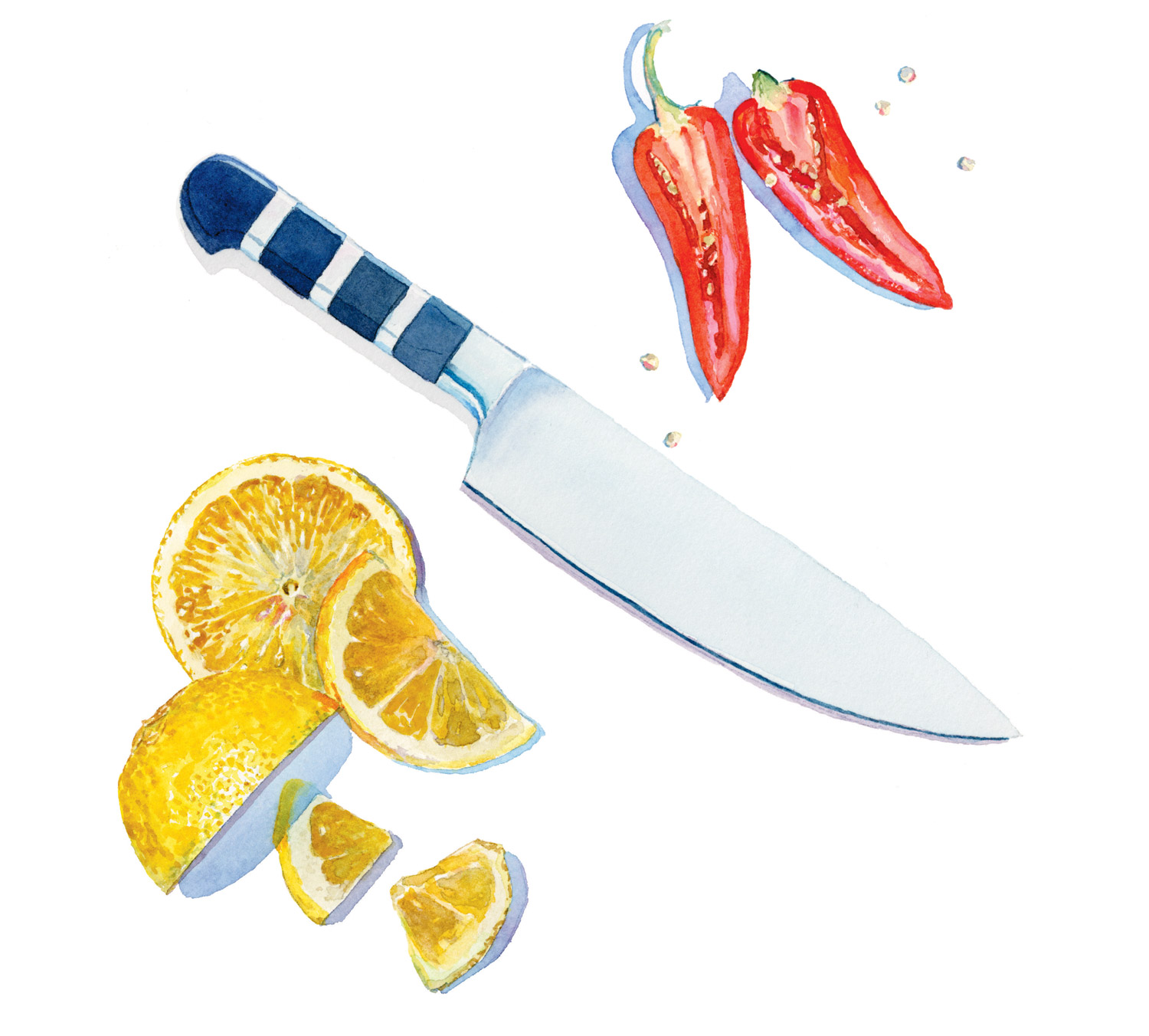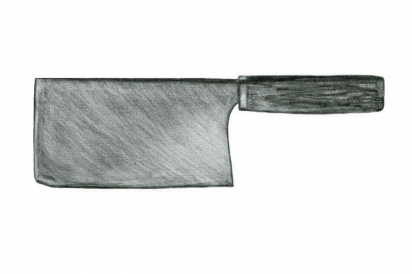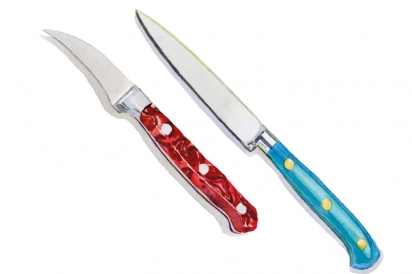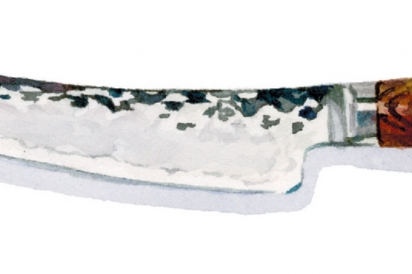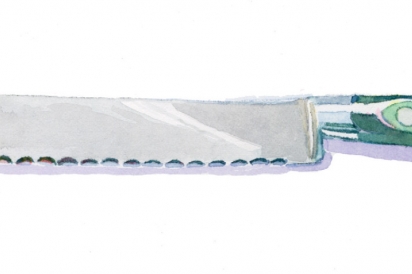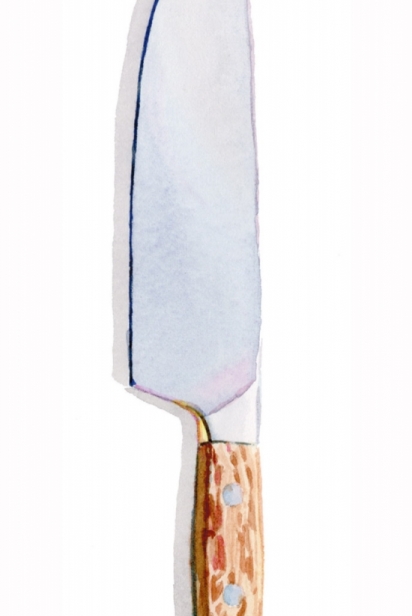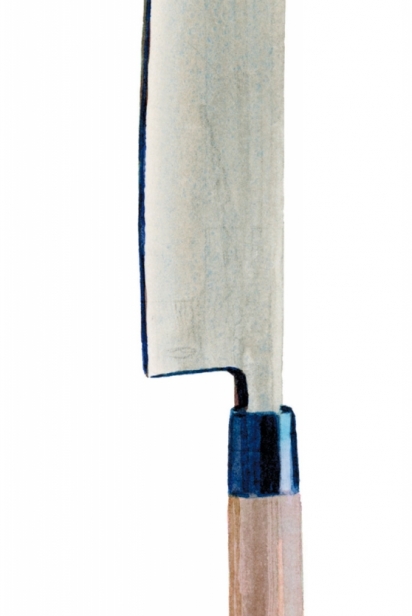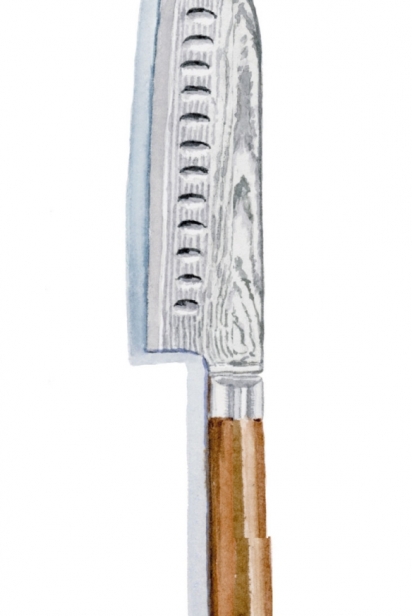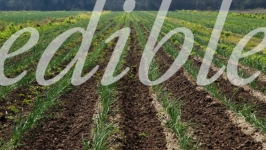The Chef’s Edge
Knives That You Love Are Essential for Excellence, and Pleasure, in the Kitchen
Most chefs will tell you that the most important tool in their kitchen is a knife.
What kind of knife would that be, Chef?
There are about seven types that make up the basic knife kit. But within that group of seven, there are wide variations in shape and size, the type of steel for the blade, material for the handle and country of origin. Ultimately, the best knife for you could be the one that caught your eye in the kitchen supply store—the one with the rosewood handle or the gleaming Damascus blade. Or it could also be the plain-Jane model that rests comfortably in your hand and holds an edge. “Buying a knife is like buying a mattress,” says Nick Rabar, chef-owner of Avenue N in Rumford. “You can spend an hour with it in the store but you have to live with it to know if it’s really right for you.”
The seven knife types shown on the next pages are really all you’ll need. Let’s say you’re shopping for a basic knife collection, or looking to complete the set you already have. Chefs have strong opinions about knives in every category, but experts agree that you should not buy a packaged set.
“You wind up overpaying for the less-significant knives and underpaying for the key ones,” writes chef and SeriousEats.com Managing Culinary Director Daniel Gritzer. “A chef ’s knife is the one that most warrants a splurge.”
WHAT’S YOUR METAL?
Carbon vs. stainless steel is the great divide in any knife discussion. Most European knives, especially those from Germany, are stainless. It’s generally a softer steel than carbon, which can make sharpening and maintenance easier. The blade won’t darken over time and is much less likely to chip or break than the harder, more brittle, carbon-steel knives from Japan. But chefs like Angie Armenise love their carbon steel knives.
“They’re sharper and lighter and more comfortable in my hand,” she says. She sharpens them before and after every use and has a professional sharpening service come to her restaurant, Blackie’s in Smithfield, once a month to sharpen, hone and finish every knife in the kitchen.
Some prefer the heavier, more substantial feel of a German-style knife. The extra weight can help with every draw of the blade. Others like the agility they gain with a lighter blade and a sharper edge. The Nakiri is the favorite knife of Andrea Leonardo, executive chef at Milk Money in Providence and Huck’s Filling Station in Warwick.
“It’s my go-to knife any time my prep list entails a lot of knife work with vegetables. It’s great for harder vegetables, too,” she says.
It’s all so subjective, and there are so many choices. If you’ve been cooking with German- style cutlery most often, maybe you should add an Asian-style blade to your collection. Treat yourself to a Shun Nakiri and see how it compares to your Wüsthof chef ’s knife. Eventually, you’ll start reaching for one more often than the other. It might take some time, but you’ll probably end up loving them both.
Learn about Swedish knifemaker Robin Dalman and “the Travelling Cleaver” here.
THE SEVEN
CHEF’S KNIFE
The chef ’s knife is the indispensable tool in most professional kitchens. It’s the knife chefs reach for when they need to chop, slice or dice. Some prefer a longer blade, some shorter, but generally they come with an 8-, 10- or 12-inch blade. Chefs are divided on Western vs. Asian blades. Often the blade of a German-style knife is curved, so you can rock it back and forth while chopping. Japanese-style blades are usually carbon steel and straight-edged.
SANTOKU
A unique blend of Asian-originated shape and a scalloped blade, the santoku is, like the chef ’s knife, a workhorse. The dimples, or scalloping, in the face of the blade makes tasks like slicing potatoes easier, since the slices don’t cling to the steel as they do with flat-finished knives. For many cooks, the santoku is their everyday kitchen tool.
NAKIRI
An oblong Japanese design that’s lighter in weight and especially useful for chopping vegetables. The broad blade efficiently shuttles the chopped veg from the cutting board to the bowl or pan. Habit-forming. It’s the go-to knife for many chefs today.
PARING—STRAIGHT
The ultimate utility knife for small jobs: paring fruit, peeling vegetables or getting at nooks and crannies in a whole bone-in chicken or piece of meat. Usually two to four inches long.
PARING—BIRD’S BEAK
Especially useful for peeling round fruits and vegetables, or for turning and shaping them. The curved blade makes this task much easier than it would be using a straight paring knife.
BONING/FILLET KNIFE
A more specialized tool for separating meat from bone, or for filleting fish. The flexible blade often curves upward at the tip to facilitate getting into intersections, joints and knuckles to cleanly cut away the meat.
BREAD KNIFE
Usually a long straight blade with a serrated edge. It’s on this list because it does so much more than just slice up a baguette. It can do just about any slicing job your kitchen throws at you. Turkey breasts, tomatoes, onions, meat loaf, prime rib—this blade can handle them all.


